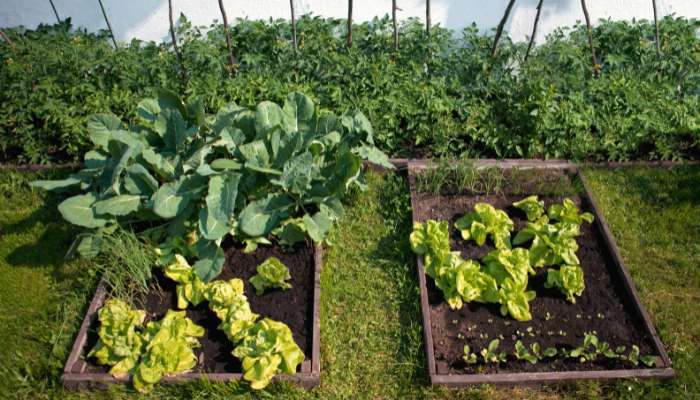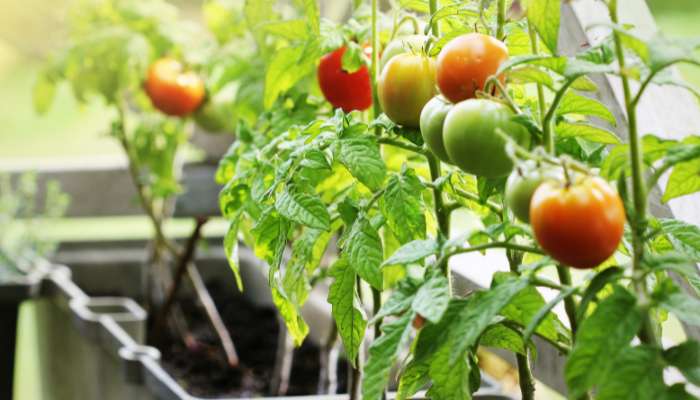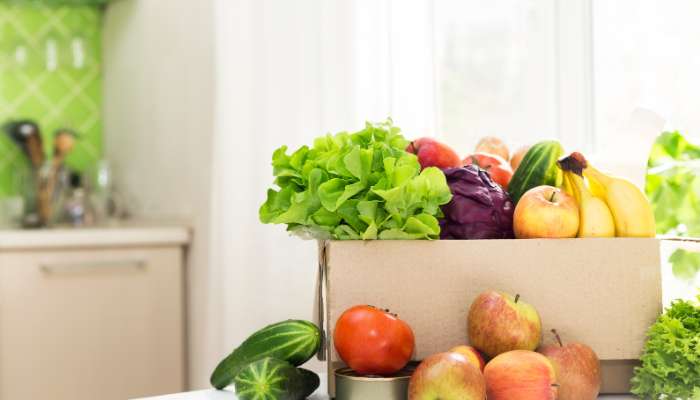Growing vegetables in apartments in India is a great way to enjoy fresh, organic produce and connect with nature, even within urban living spaces. With careful planning and innovative techniques, apartment dwellers across India can grow bountiful crops of vegetables at home, whether they have a balcony, terrace, or sunny windowsill.
Table of Contents
Benefits of Growing Vegetables in Apartments in India
Apartment vegetable gardening offers several advantages for urban residents:
- Fresh, Organic Produce: Grow your own vegetables to enjoy the taste and nutritional benefits of fresh, pesticide-free produce.
- Cost Savings: Save money on grocery bills by growing vegetables at home, reducing reliance on store-bought produce.
- Space Optimization: Make the most of limited space in apartments by utilizing balconies, terraces, or windowsills for vegetable cultivation.
- Environmental Sustainability: Reduce your carbon footprint by growing your own food, promoting sustainability and self-sufficiency.
Getting Started: Essential Supplies
Before starting your apartment vegetable garden, gather the following supplies:
- Containers: Choose containers with sufficient depth and drainage holes to accommodate the root systems of vegetables. Options include pots, grow bags, or repurposed containers like buckets or plastic crates.
- Potting Mix: Use a well-draining potting mix enriched with organic matter and nutrients for healthy plant growth.
- Vegetable Seeds or Seedlings: Select vegetable varieties suited to your climate and growing conditions. Consider popular options like tomatoes, chili peppers, spinach, and coriander (cilantro).
- Watering Can or Hose: Ensure easy access to water for regular irrigation of vegetable plants.
- Fertilizer: Choose organic or slow-release fertilizers to provide essential nutrients for vegetable growth and development.

Step-by-Step Guide to Growing Vegetables in Apartments in India
Follow these steps to start your apartment vegetable garden in India:
- Assess Sunlight: Determine the amount of sunlight available in your apartment and choose vegetable varieties that thrive in those conditions. Most vegetables require at least 6-8 hours of direct sunlight daily.
- Select Containers: Choose containers of appropriate size and depth for each vegetable variety. Ensure containers have drainage holes to prevent waterlogging.
- Prepare Potting Mix: Fill containers with a nutrient-rich potting mix, leaving a few inches of space at the top for watering. Incorporate organic compost or vermicompost for added fertility.
- Planting: Sow seeds or transplant seedlings into containers according to spacing guidelines for each vegetable variety. Water thoroughly after planting to settle the soil and encourage root establishment.
- Watering: Water vegetable plants regularly, keeping the soil evenly moist but not waterlogged. Adjust watering frequency based on environmental conditions and plant needs.
- Fertilizing: Apply organic fertilizer or compost tea every 2-4 weeks to replenish nutrients in the soil and support healthy growth.
- Pest and Disease Management: Monitor vegetable plants for signs of pests or diseases and take appropriate action to prevent infestations or spread. Use organic pest control methods whenever possible.
- Harvesting: Harvest vegetables as they mature, using clean gardening tools to avoid damage to plants. Enjoy the fresh taste of homegrown produce in your favorite recipes.

Tips for Success
Follow these tips to ensure success with apartment vegetable gardening in India:
- Choose Suitable Varieties: Select vegetable varieties that are well-suited to your climate and growing conditions, considering factors like temperature, humidity, and sunlight availability.
- Optimize Space: Maximize available space by using vertical gardening techniques, such as trellises or hanging planters, to grow vining vegetables like tomatoes or beans.
- Practice Companion Planting: Companion planting can help deter pests and promote healthy growth by planting compatible vegetables together.
- Rotate Crops: Rotate vegetable crops annually to prevent nutrient depletion and soil-borne diseases, improving overall garden health and productivity.
Conclusion
Apartment vegetable gardening in India offers a beneficial and sustainable way to enjoy fresh, homegrown produce and embrace the joys of gardening in an urban environment. Whether you’re growing tomatoes on your balcony, peppers on your terrace, or spinach on your windowsill, there are endless possibilities for apartment dwellers to grow a thriving vegetable garden at home.
With a little planning, dedication, and creativity, you can enjoy a bountiful harvest of vegetables and experience the satisfaction of self-sufficiency and environmental stewardship.
















